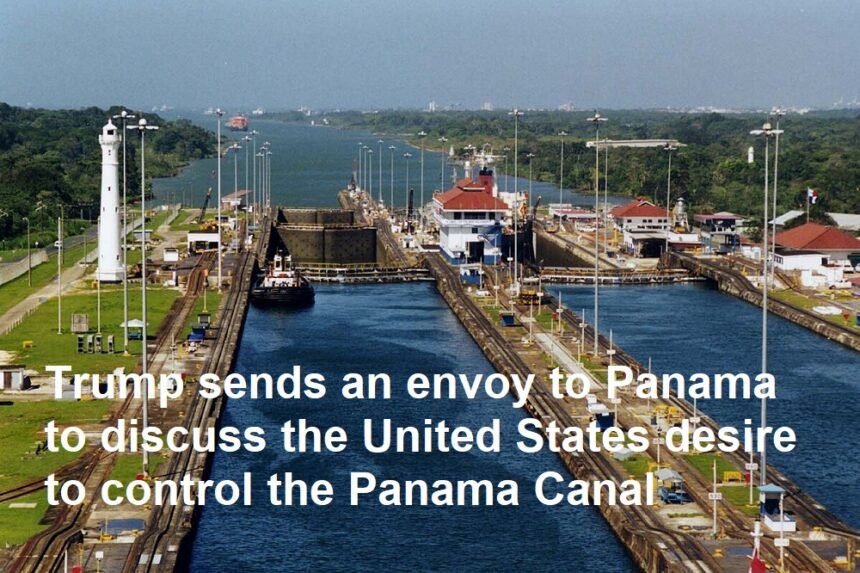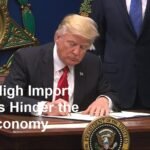In recent developments that reflect the ongoing geopolitical maneuverings of the United States under former President Donald Trump, Senator Marco Rubio has been dispatched to Panama as part of a broader strategy aimed at asserting American influence over the Panama Canal. This mission underscores the importance of the canal not only as a maritime passageway but also as a crucial nexus of global trade and power dynamics.
Constructed in the early 20th century and completed in 1914, the Panama Canal has been a vital artery for international trade, allowing ships to transit between the Atlantic and Pacific Oceans without the lengthy detour around South America’s Cape Horn. Control over this strategic waterway has long been a focal point of American foreign policy. The canal was initially owned and operated by the United States until the Carter-Torrijos Treaties of 1977, which led to its handover to Panama on December 31, 1999.
While Panama has since maintained sovereignty over the canal, the geopolitical significance of this region has not waned. With the rise of global trade, particularly in Asia and the ongoing threats posed by geopolitical rivals, the American interest in maintaining a robust influence over Panama and its canal has become increasingly apparent.
Senator Marco Rubio, a prominent figure within the Republican Party and a vocal supporter of Trump’s policies, has been tasked with this delicate diplomatic mission. His role as a U.S. senator from Florida, a state with significant trade routes and an extensive maritime industry, gives him an insightful perspective on the economic and security ramifications of weakening American influence in Central America.
Rubio’s diplomatic envoy to Panama is likely intended to reaffirm U.S. commitment to Panama as a partner, especially in trade and military cooperation. His presence serves to strengthen bilateral relations and address any emerging challenges, such as increased Chinese influence in the region. China has made considerable investments in Latin America, often positioning itself as an alternative to U.S. interests, which raises concerns among American politicians.
The United States has compelling reasons for maintaining a vested interest in the Panama Canal. Beyond its historical and economic significance, control over the canal allows the U.S. to exercise influence over shipping routes that are critical for both trade and military logistics. Ensuring that the canal remains open and accessible supports American interests in securing maritime transport for goods, energy resources, and military assets.
Furthermore, the recent increase in shipping traffic through the canal, partly driven by global supply chain shifts, accentuates its relevance. For instance, the expansion of the canal completed in 2016 has allowed larger vessels, known as New Panamax ships, to traverse its waters. This change has significant implications for global shipping routes, illustrating the necessity for the U.S. to maintain a significant role in regional affairs.
While the prospect of increased U.S. influence in Panama may appear advantageous, it is fraught with challenges. Panama’s government, led by President Laurentino Cortizo, is navigating competing interests, including Chinese investments and regional partnerships. The geopolitical landscape in Latin America is evolving, and any missteps could jeopardize U.S. standing in a region that has seen a trend toward populism and nationalism.
Moreover, domestic opposition to American interventionism poses additional hurdles. The memory of past U.S. operations in Panama, including the controversial U.S. invasion in 1989 to depose General Manuel Noriega, complicates the narrative. Any diplomatic overtures must carefully consider the historical context and the sentiments of the Panamanian populace, who are protective of their sovereignty.
Marco Rubio’s mission to Panama is emblematic of the overarching ambition to reassert American influence in a strategically vital region. As the dynamics of global trade and geopolitics continue to evolve, the role of the Panama Canal remains critical. The implications of this diplomatic endeavor are profound, not only for U.S.-Panama relations but also for the broader landscape of international trade and security.
As we watch the developments unfold, it becomes increasingly clear that the U.S. must navigate a complex web of partnerships and rivalries in Latin America. Establishing a cooperative relationship with Panama could solidify U.S. interests in the region, ensuring that the Panama Canal continues to serve as a critical artery for both trade and strategic military movement in the years to come. The outcome of Rubio’s mission will undoubtedly have lasting repercussions that reach far beyond the waters of the canal itself.













